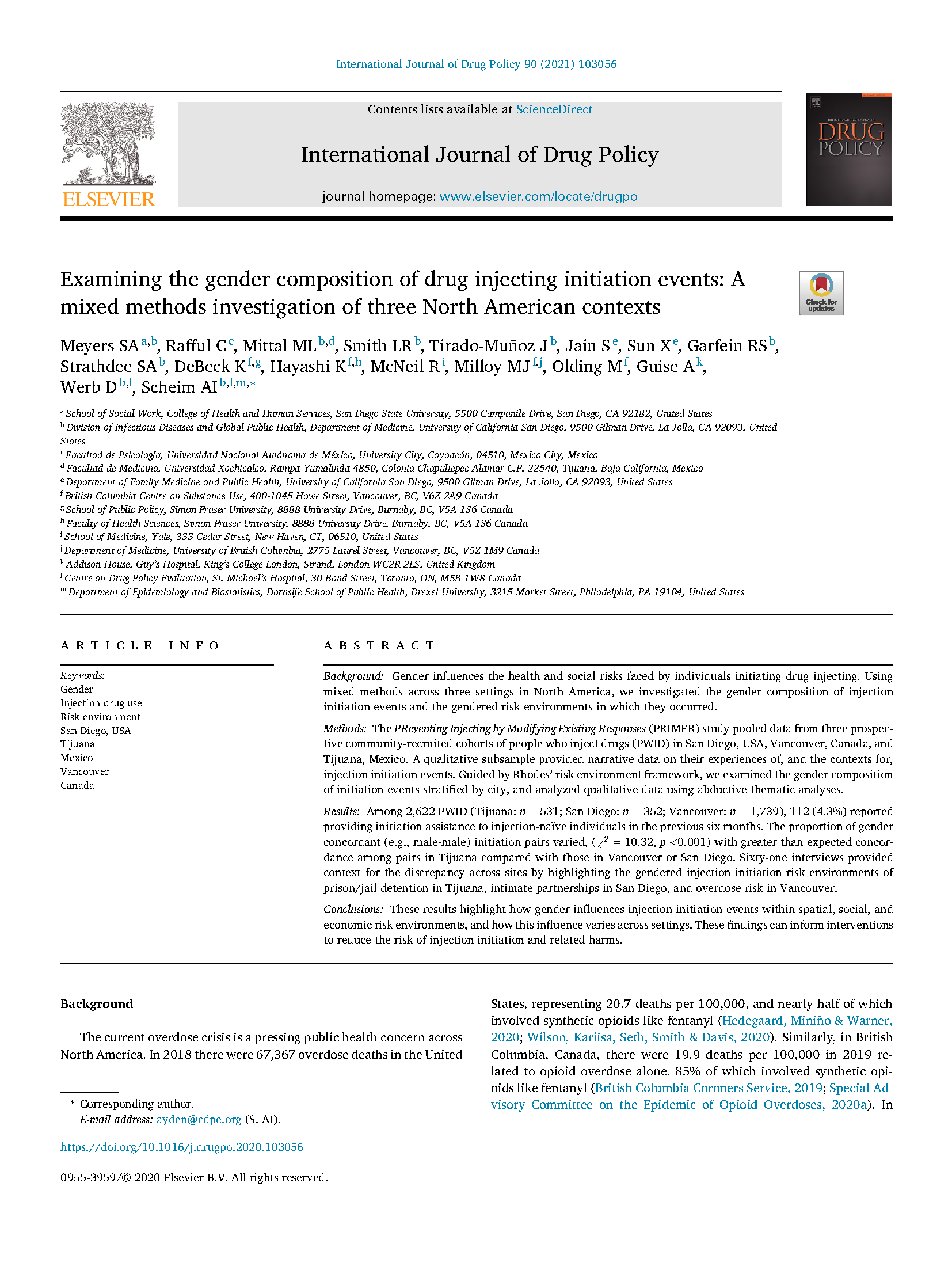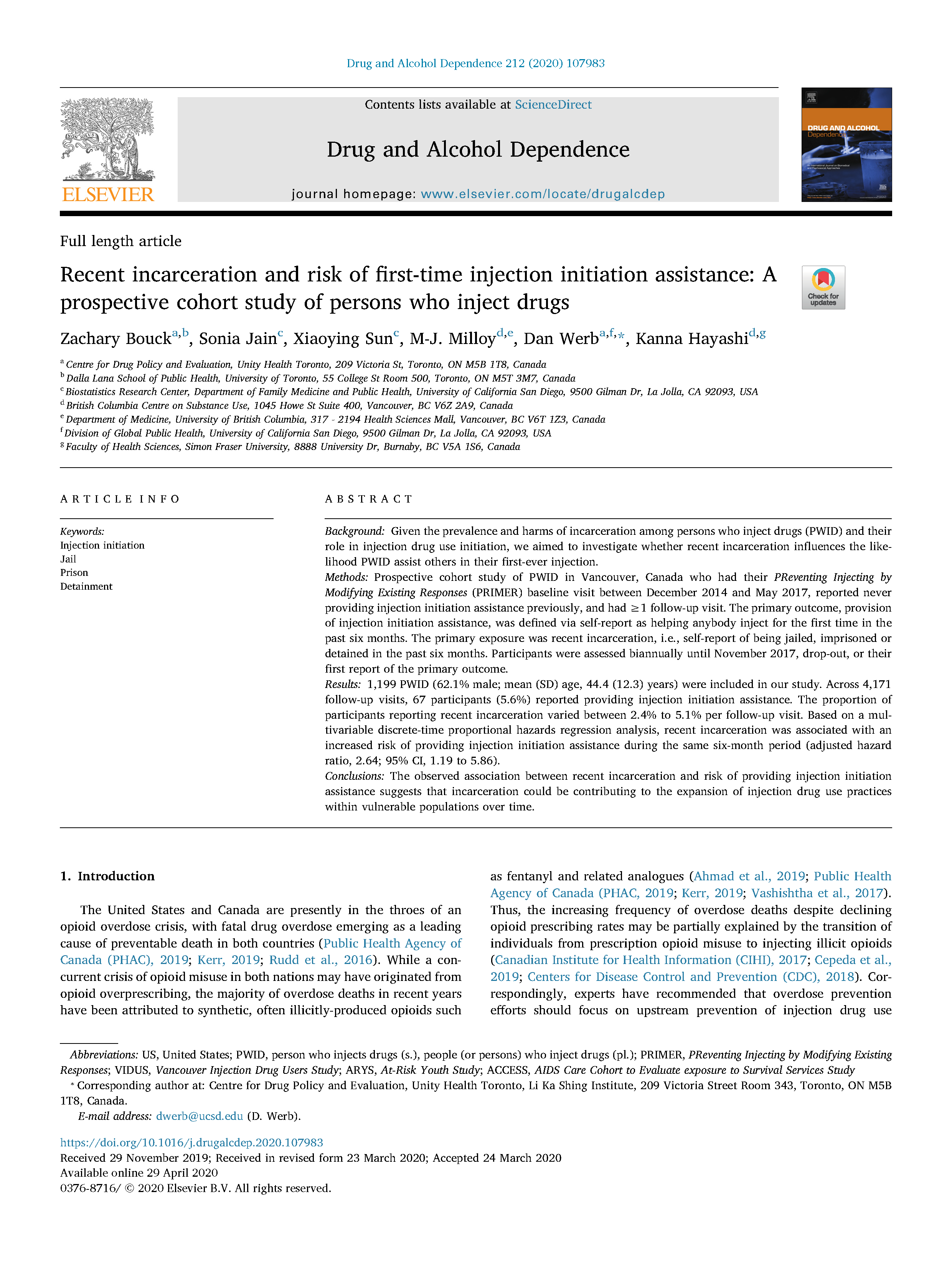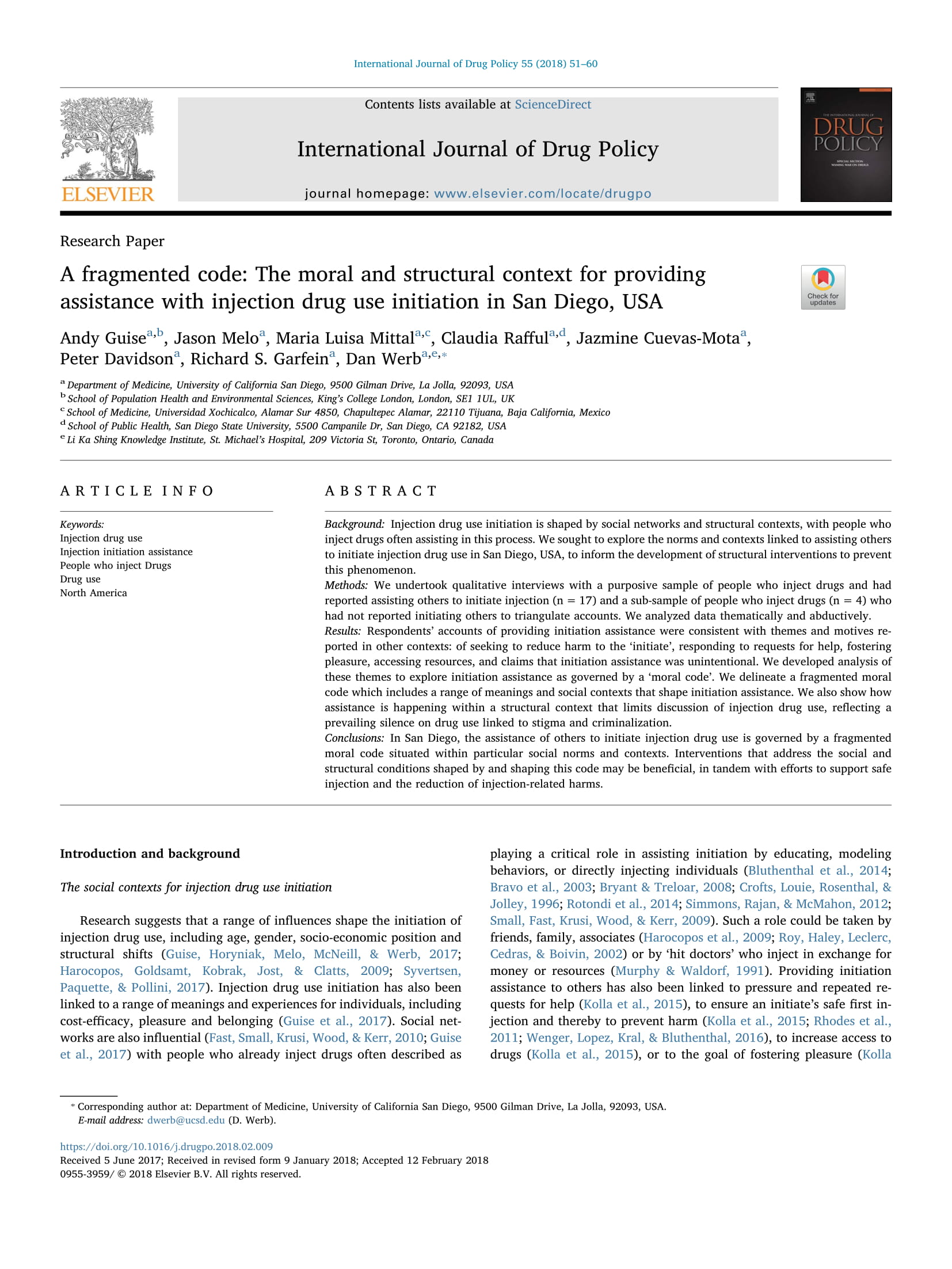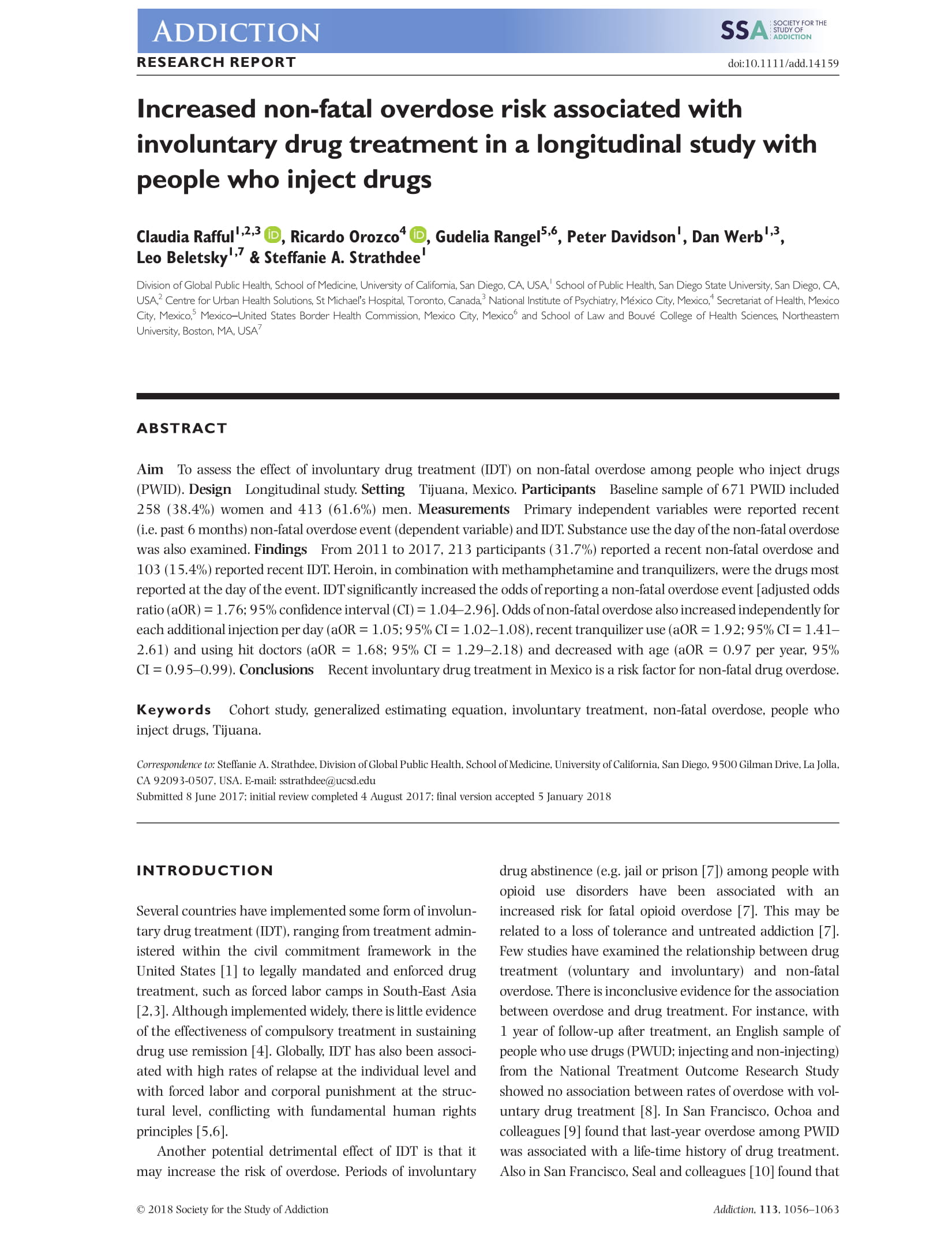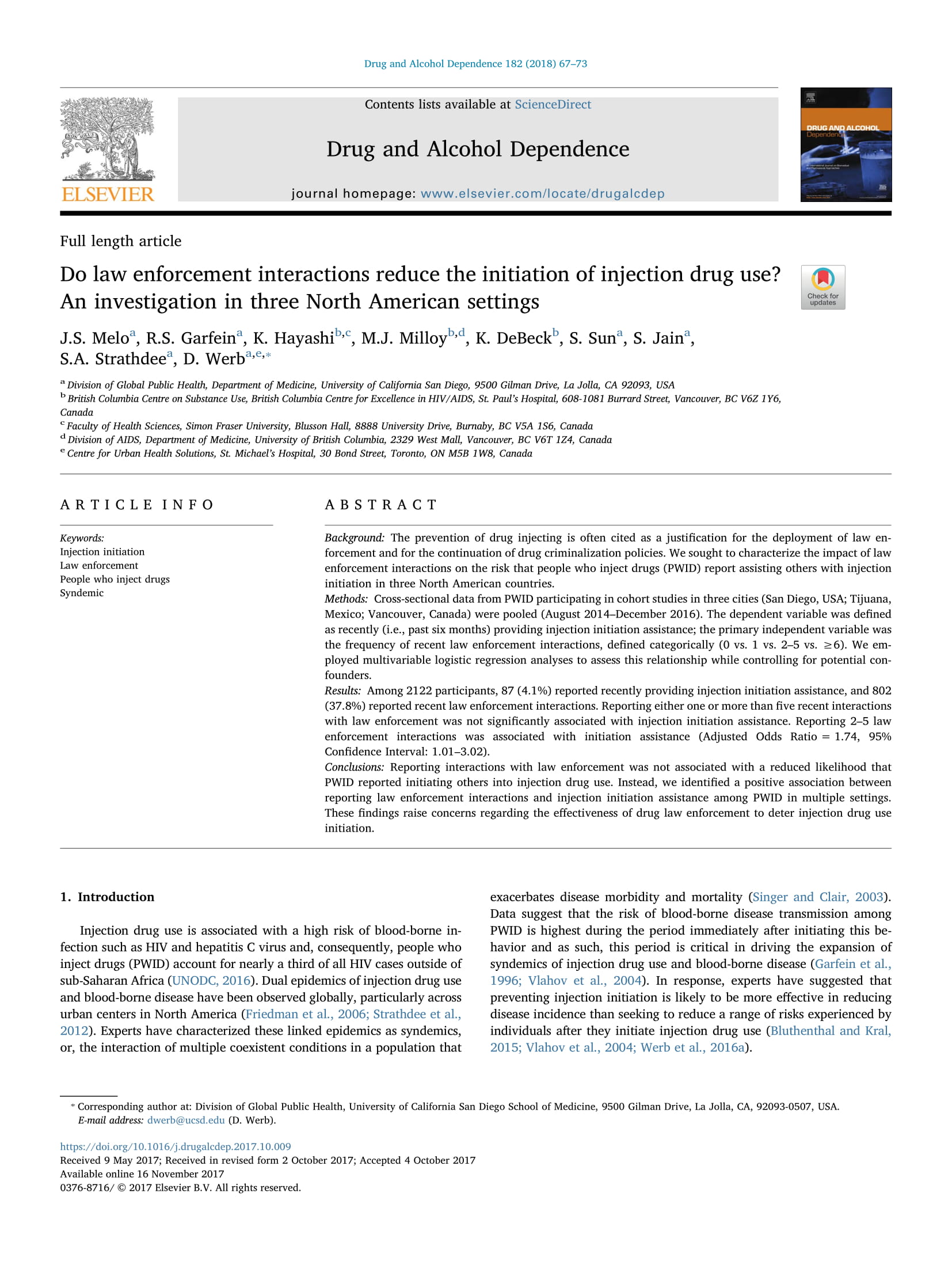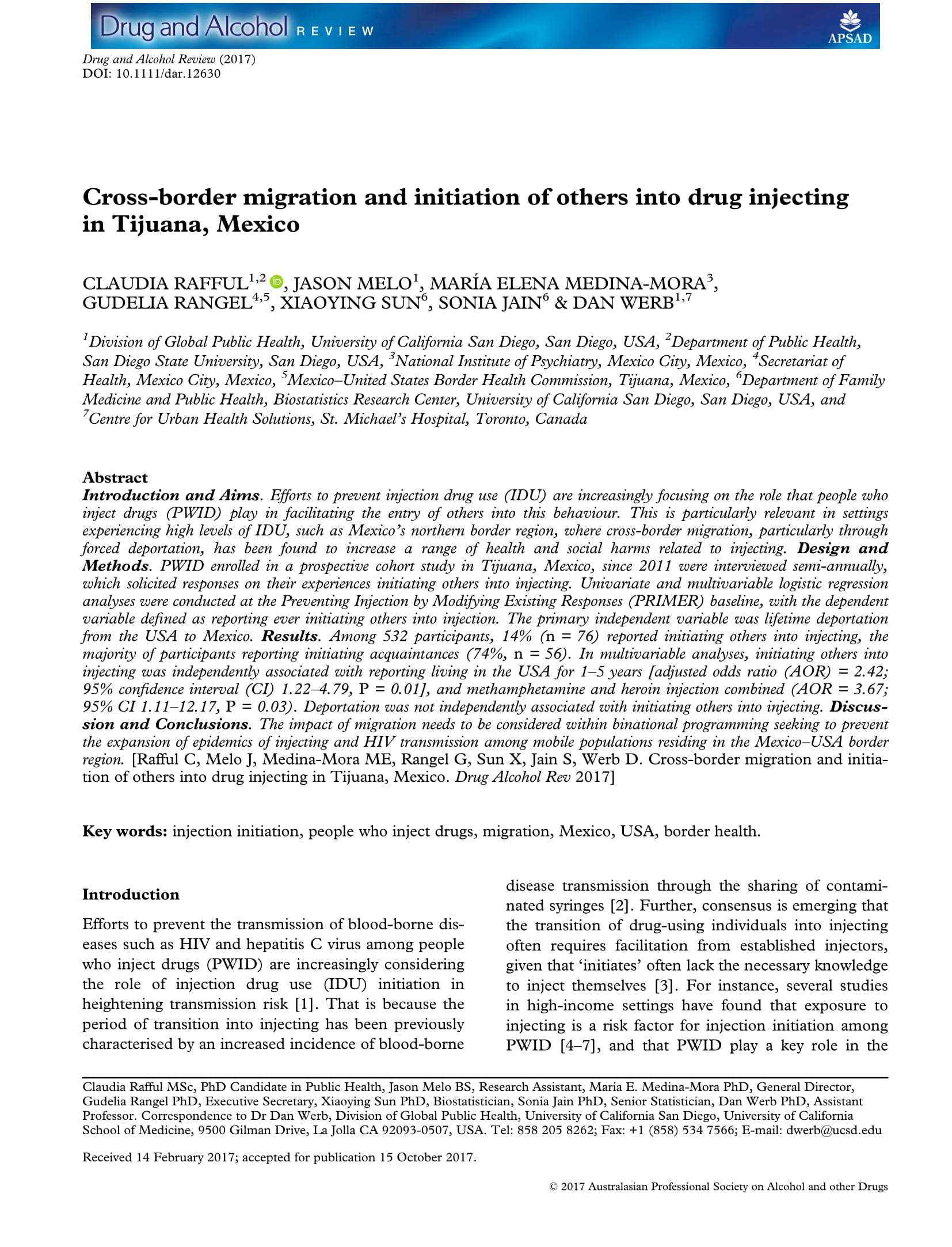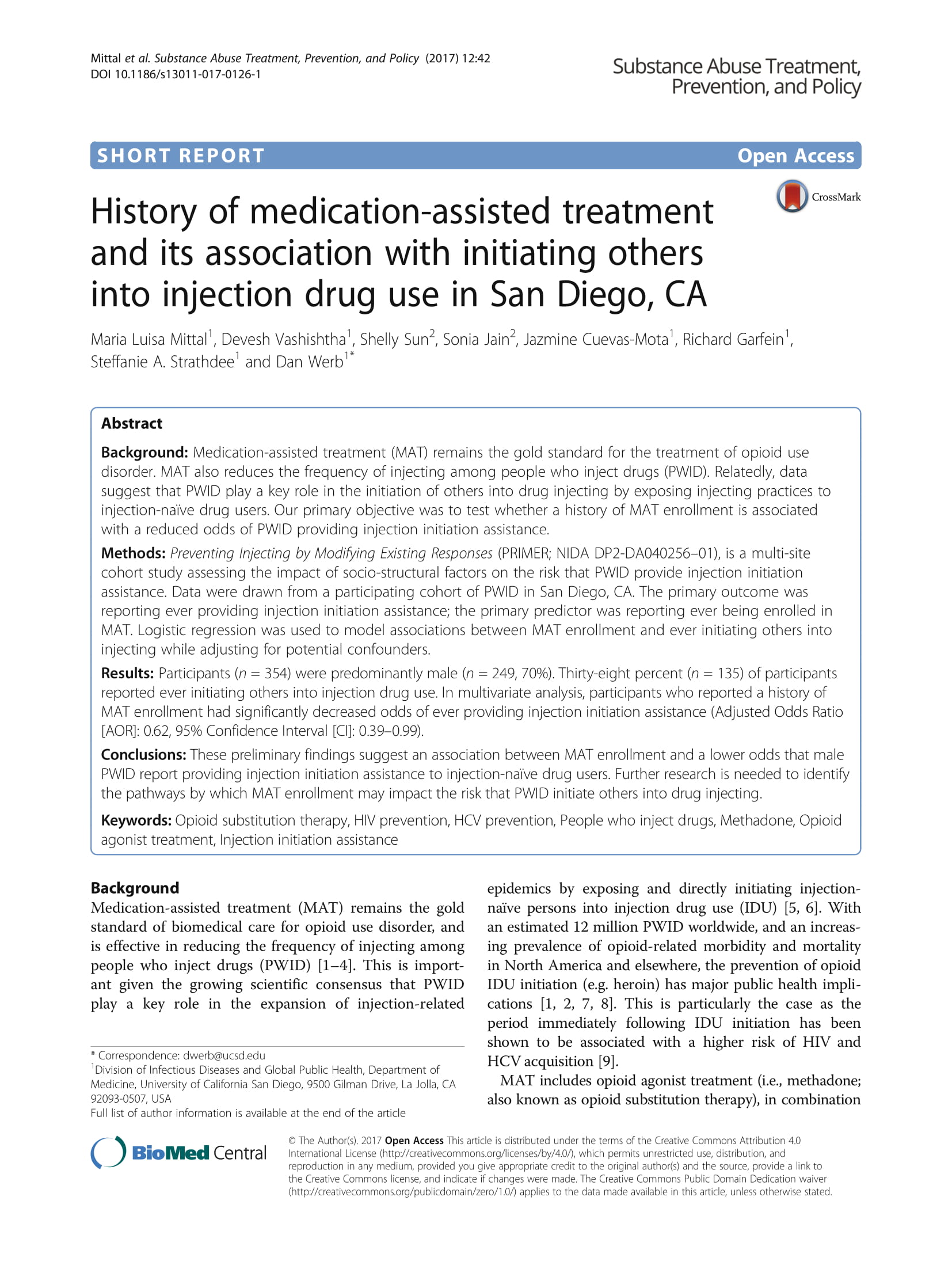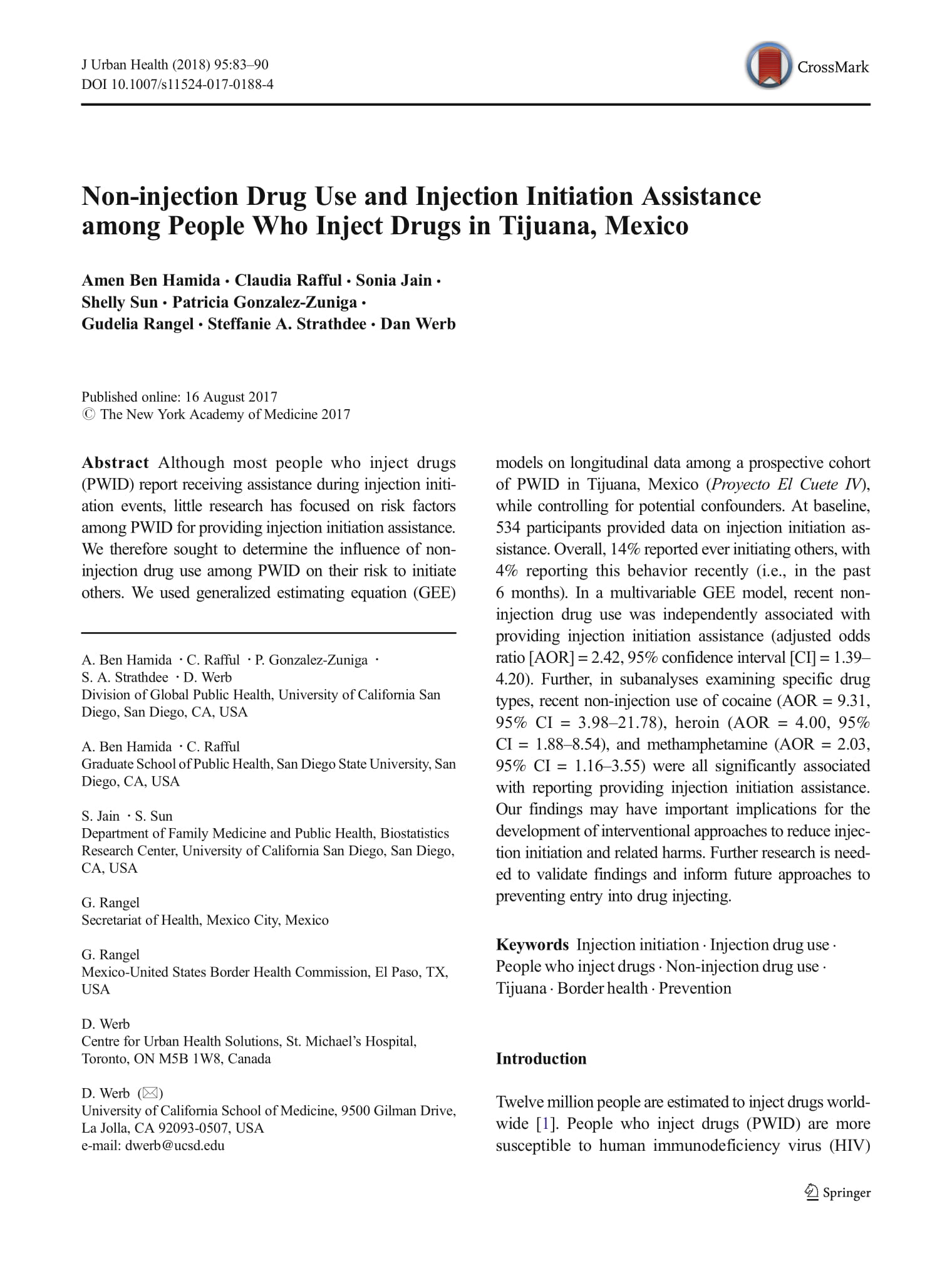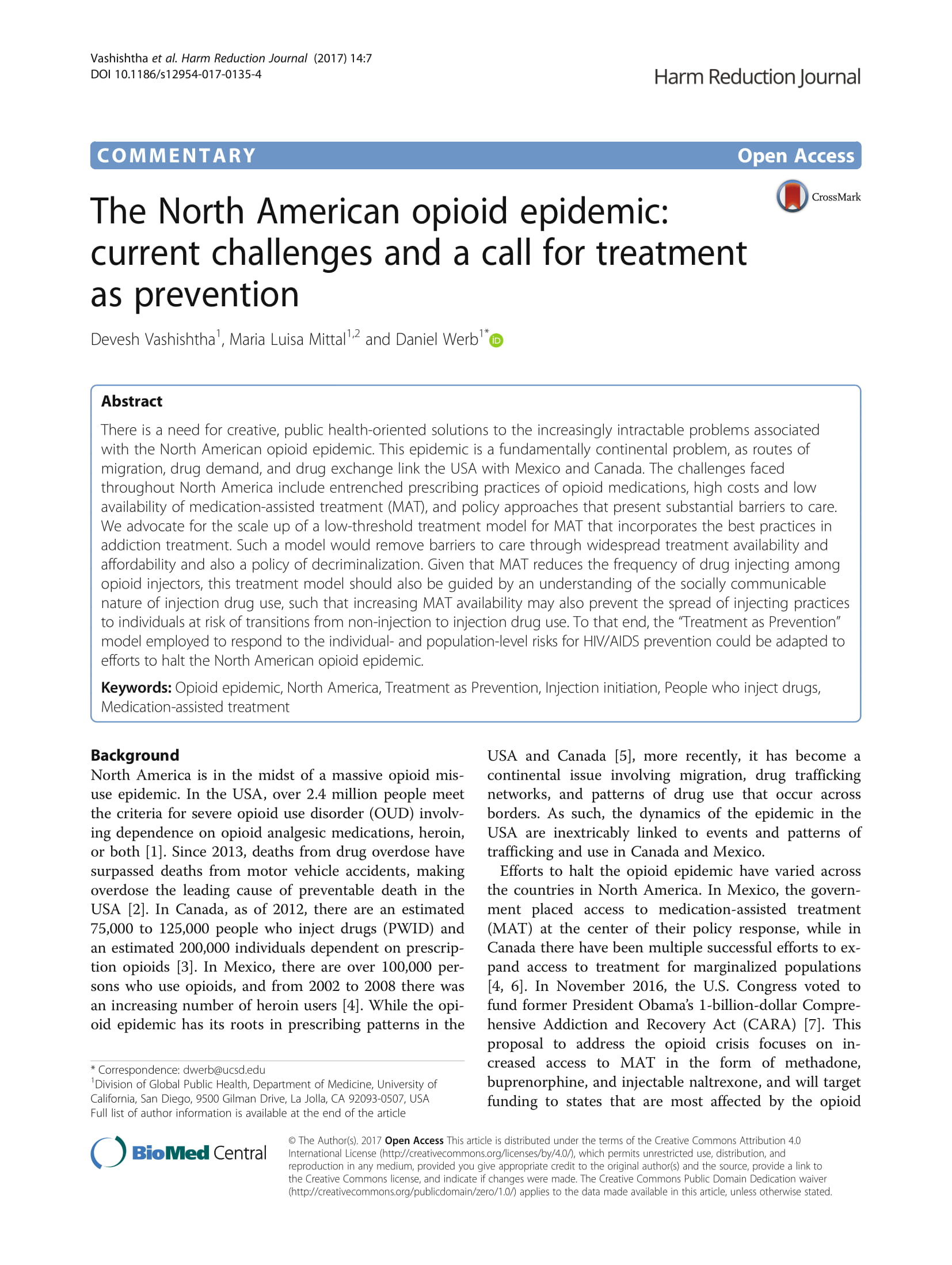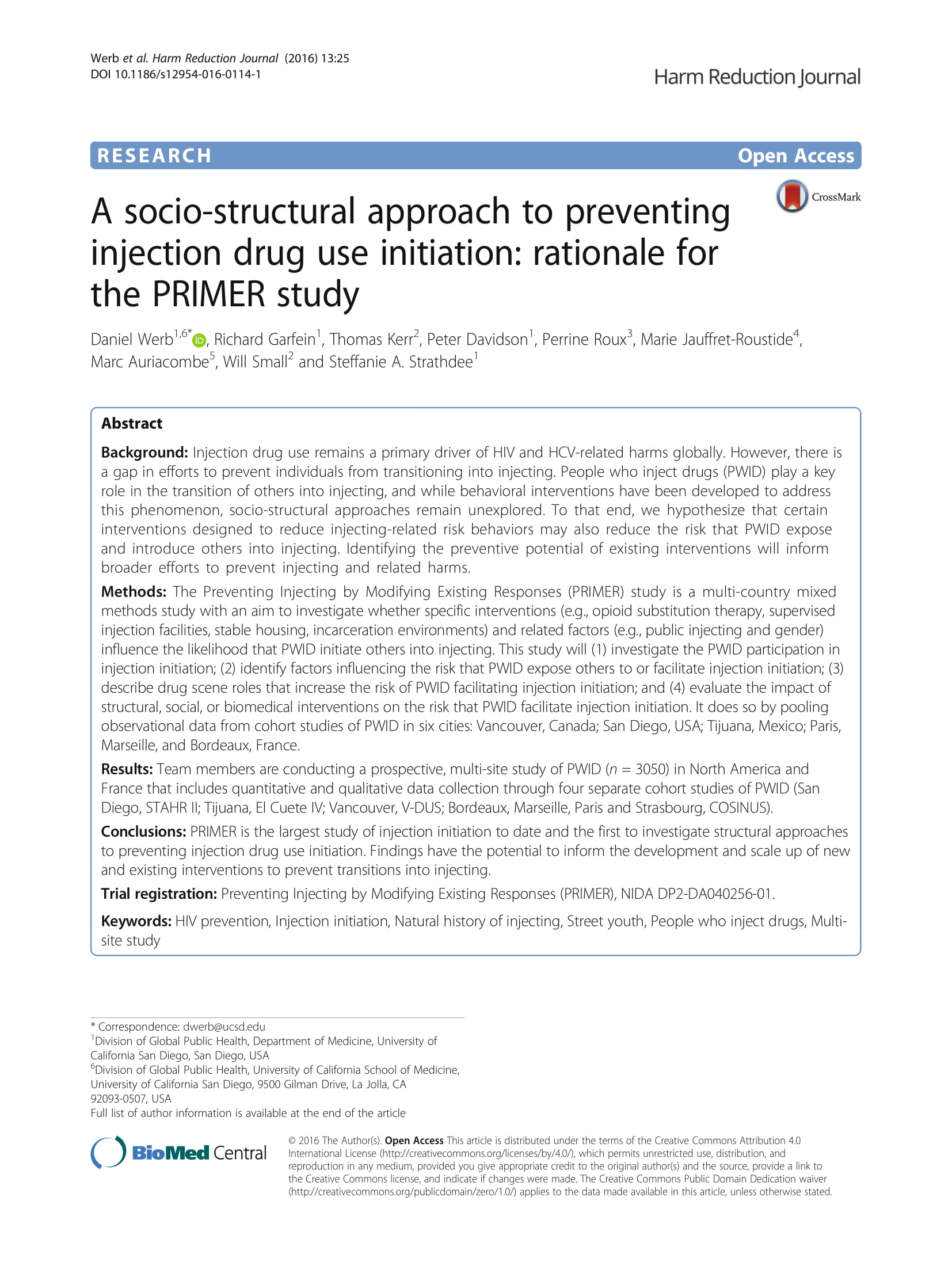Injection Drug Use Trajectories Among Migrant Populations: A Narrative Review
Abstract
Background: Dual epidemics of injection drug use and blood-borne disease, characterized as “syndemics,” are present in a range of settings. Behaviors that drive such syndemics are particularly prevalent among mobile drug-using populations, for whom cross-border migration may pose additional risks. Objectives: This narrative review aims to characterize the risk factors for injection drug use initiation associated with migration, employing a risk environment framework and focusing on the San Diego–Tijuana border region as the most dynamic example of these phenomena. Methods: Based on previous literature, we divide migration streams into three classes: intra-urban, internal, and international. We synthesized existing literature on migration and drug use to characterize how mobility and migration drive the initiation of injection drug use, as well as the transmission of hepatitis and HIV, and to delineate how these might be addressed through public health intervention. Results: Population mixing between migrants and receiving communities and the consequent transmission of social norms about injection drug use create risk environments for injection drug use initiation. These risk environments have been characterized as a result of local policy environments, injection drug use norms in receiving communities, migration-related stressors, social dislocation, and infringement on the rights of undocumented migrants. Conclusion: Policies that exacerbate risk environments for migrants may inadvertently contribute to the expansion of epidemics of injection-driven blood-borne disease. Successful interventions that address emerging syndemics in border regions may therefore need to be tailored to migrant populations and distinguish between the vulnerabilities experienced by different migration classes and border settings.
View the full article.



